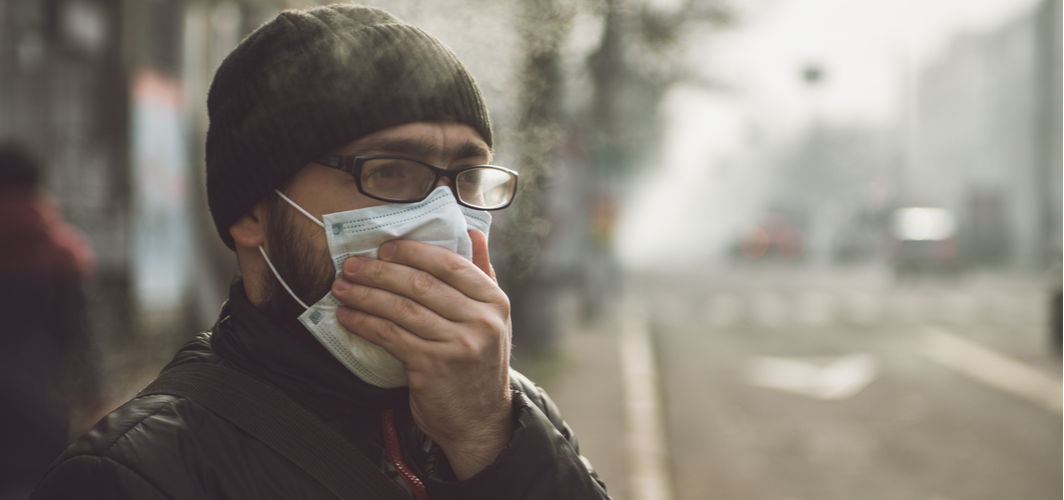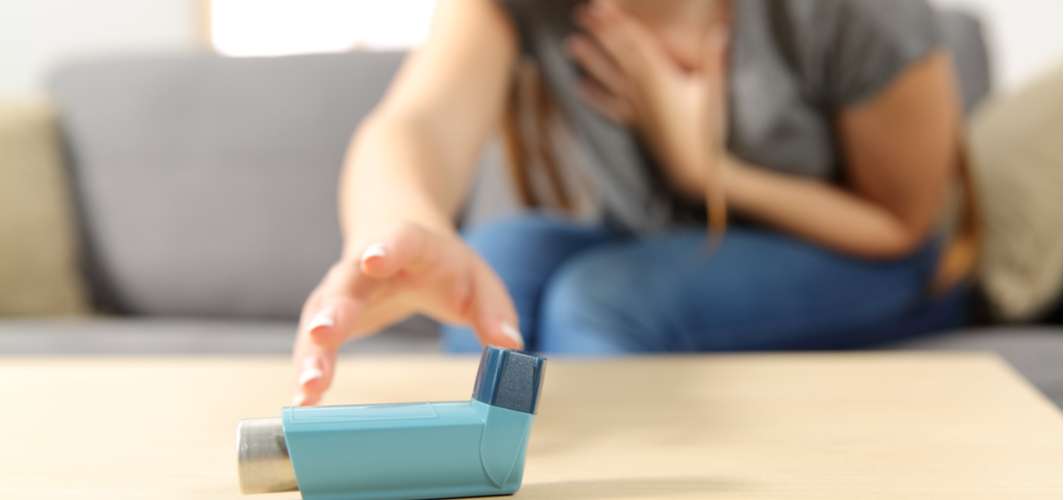Air pollution is one of the biggest environmental challenges that confront mankind. It is a major health hazard that is responsible for climate change, poor quality of life, and loss of productivity across the world. Nevertheless, its biggest impact by far is on public health.
Breathing in heavily polluted air is associated with numerous health problems such as asthma, chronic obstructive pulmonary disease (COPD), lung cancer, respiratory infections, and cardiovascular disease (CVD). According to the World Health Organization, 91% of the global population lives in regions where air pollution exceeds prescribed limits.
The problem is particularly acute in low- and middle-income countries like India. The country is home to some of the most polluted cities in the world. In India, the problem of polluted air becomes particularly severe with the onset of winter when a massive surge in pollutants gives rise to deadly smog conditions.
What is air pollution?
Air pollution is defined as a mixture of hazardous gases and particles emitted from natural and man-made sources. Air pollution is classified into two major types: ambient (or outdoor) air pollution and household (or indoor) air pollution.
Some of the most common air pollutants are:
- Particulate Matter (such as PM2.5 and PM10)
- Carbon Monoxide (CO)
- Carbon Dioxide (CO2)
- Nitrogen Dioxide (NO2)
- Sulfur Dioxide (SO2)
- Ozone (O3)
- Lead (Pb)
- Ammonia (NH3)
Air pollution is measured based on AQI (Air Quality Index), which is an indicator used to evaluate the quality of air. The index categorizes levels of air pollutants in six categories: Good (0-50), Satisfactory (51-100), Moderately polluted (101-200), Poor (201-300), Very Poor (301-400), and Severe (401-500).
Factors responsible for air pollution in India
In India, air pollution is caused by the burning of fossil fuels, vehicular and industrial emissions, coal-based power plants, construction-related activities, agricultural activities, waste burning, and the use of wood and cow-dung for cooking. While some of these factors contribute to air pollution throughout the year, there are a few others that are occasional or seasonal in nature.
During the months of October and November, farmers from a few states in northern India burn farm residue such as straw and stubble after harvesting crops. This causes a significant increase in the concentration of harmful air pollutants. Owing to a drop in temperature and slow wind speeds, a thick layer of smog composed of particulate matter and harmful gases is formed. Due to weather conditions, this smog remains suspended in the atmosphere for days, severely affecting the quality of air.
Impact of air pollution on respiratory health
These seasonal spikes in air pollution during the months of October and November adversely impact respiratory health and lung function. One of the major short-term effects of seasonal air pollution is acute respiratory infection (ARI). People living in areas affected by severe air pollution are reportedly at a three-fold higher risk of ARI. Common symptoms of ARI include headache, coughing, wheezing, and irritation in the eyes, nose, and throat. Air pollution is believed to account for 17% of worldwide deaths attributed to acute respiratory infection.
Long-term effects of seasonal air pollution may include respiratory conditions such as asthma, bronchitis, tuberculosis, and chronic obstructive pulmonary disease (COPD). According to the WHO, air pollution is responsible for 43% of COPD deaths and 29% of lung cancer deaths globally. Other effects of air pollution include increased risk of strokes, heart attacks, and coronary heart disease.
Air pollution in India: Statistics
- Air pollution is the third biggest cause of all health-related deaths in India.
- India is the third-largest emitter of greenhouse gases in the world, behind only China and the USA.
- Six of the ten most polluted cities in the world are in India. New Delhi was the most polluted capital city in the world in 2019.
- According to a report ‘State of Global Air 2019’, air pollution caused 5 million deaths globally in 2017. Of these, 1.2 million deaths occurred in India.
- Nearly 0.67 million deaths in India were caused by outdoor (ambient) air pollution. Another 0.48 million deaths were attributed to indoor (or household) air pollution.
How to avoid exposure to air pollution?
While it may not be possible to avoid air pollution entirely, there are certain measures that can be adopted to reduce exposure to polluted air. Some of these measures include:
When the outdoor air pollution is severe, all people - especially kids, elderly people and those with existing medical conditions - should remain indoors. Efforts should be made to avoid or reduce indoor penetration of air pollutants. Wearing an N95 or N99 mask when travelling outside is necessary.
-
Avoid outdoor physical activity
Exercising in polluted air is not recommended as it can do more harm than good. If necessary, engage in exercise or physical activity inside the house.
-
Limit indoor air pollution
Avoid exposure to anything that burns, such as candles, incense sticks and wood-burning stoves. Avoid smoking inside the house.
-
Maintain indoor cleanliness
Pay attention to domestic cleanliness. Avoid sweeping and/or vacuum cleaning as these can stir up settled dust and particulate matter. Instead, opt for wet mopping.
-
Avoid using motorized vehicles
Travelling via cars, scooters and motorcycles can further worsen air pollution. Avoiding motorized vehicles can play an important role in improving the quality of air.
-
Make necessary provisions for kids and the elderly
If possible, allocate a separate (and clean) room to young children and/or elderly persons. The room should not have many windows and doors.
If there is no way to prevent penetration of polluted air from outside (or if there is indoor air pollution), then air purifiers should be considered. Air purifiers are devices designed to keep indoor air free from particulate matter, toxic gases, and harmful microorganisms.
Conclusion
Over the years, polluted air has become a persistent health hazard. However, it becomes a major public health emergency with the arrival of the winter season every year. Although efforts have been made by governments and civil society organizations to curb air pollution and create awareness around the problem, not much has changed on the ground. As a result, we are continuing to see a spike in harmful air pollutants.
Societal change in attitude towards air pollution will only come with time. Till then, it is important to ensure protection from air pollution. Following the aforementioned precautions, taking active measures to reduce air pollution, and creating awareness will go a long way in bringing air pollution under control.
Consult a pulmonologist for any queries on respiratory health.
Book a Consultation











